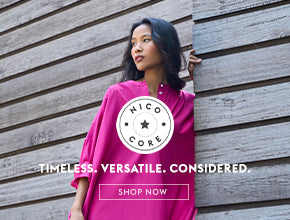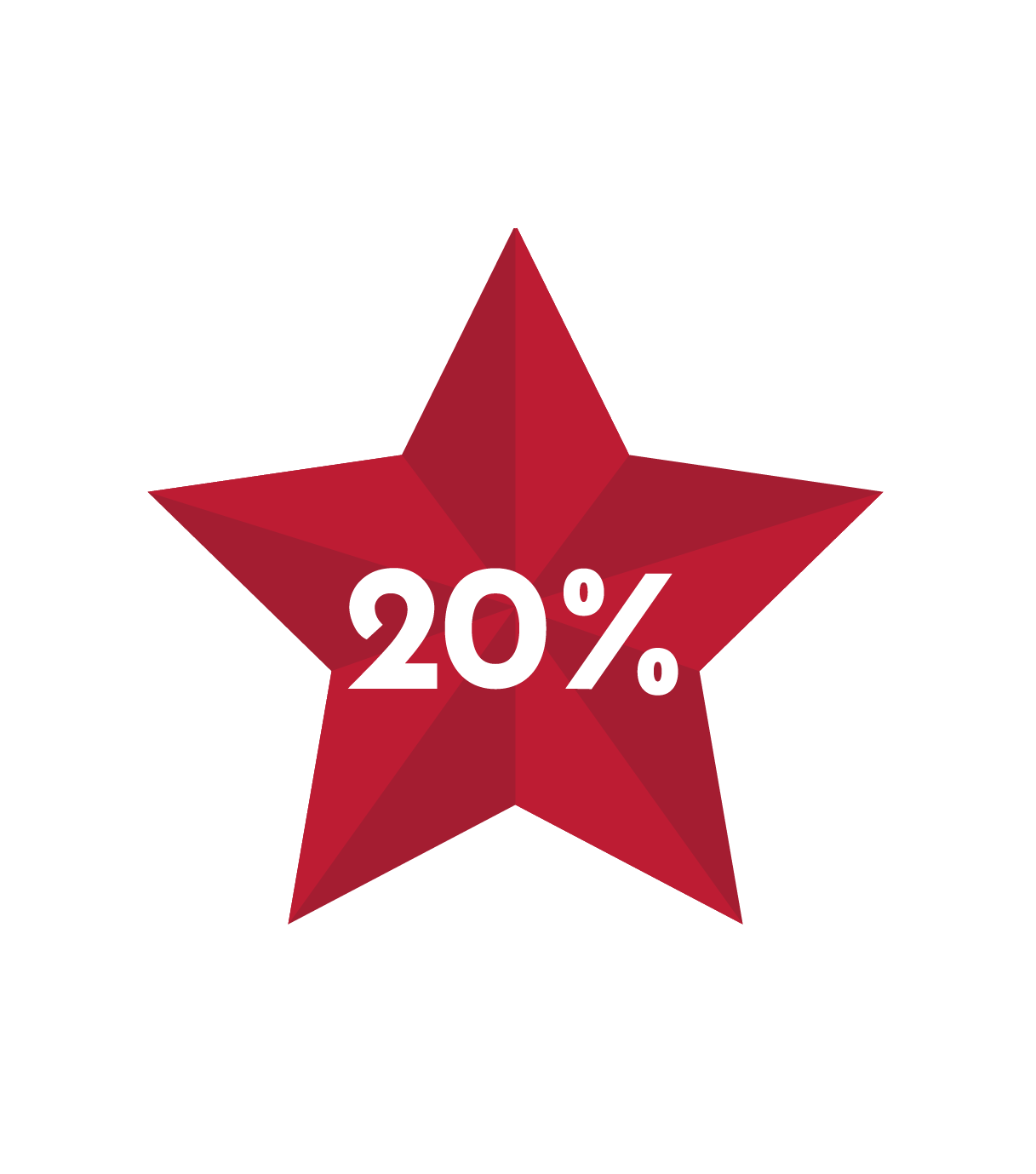Paradise Found
There’s a phrase doing the rounds lately. At the Amazon India Fashion Week Autumn/ Winter 2016, they called it India Modern, and it was the season’s defining theme. At the newly launched lifestyle label Nicobar, they call it the more straightforward ‘Modern India’. Direct as it may be, for founders Simran Lal and Raul Rai, it’s an idea that’s much bigger than it seems. It’s an ethos that’s steeped in ‘creating a modern Indian way of living, dressing, and looking at the world’. It is an outlook that recognises that the urban Indian’s worldview is as much about looking inward as it is outward. This is the philosophy that Nicobar is built upon, and one that made it the season’s most awaited and popular launch.
They’ve achieved this by putting forth collections of apparel, and home and travel accessories that are minimal but ever-so-slightly whimsical, Indian at heart and global in appeal. Dresses and skirts in gossamer chanderi, and men’s trousers and kurta-shirts in linen and cotton, all transition easily from day to night. Lotus and palm tree motifs dot its stoneware plates and bowls, alongside salad bowls, cheeseboards, and sushi platters. And Nicobar encourages the sale of individual pieces rather than traditional dinner sets, promoting a make-your-own ethos, which extends to its clothes as well.
„ AND THAT’S OUR VERSION OF MODERN INDIA. IT’S QUIETLY CONFIDENT. THERE’S MORE DIVERSITY IN TERMS OF WHAT PEOPLE ARE WILLING TO DO, THE RISKS THEY’RE WILLING TO TAKE, AND A BIGGER WILLINGNESS TO EXPRESS THEIR STYLE.—RAUL RAI „
Conceptualised by creative director Lal over a decade ago, the idea gained impetus when her husband, co-founder and CEO Rai quit his private equity job in 2014. Lal, who is also the CEO of that other much-beloved lifestyle giant Good Earth, remembers, “We felt the need—and we always start things when we feel them— for a simple, relaxed, and easy aesthetic; a lifestyle complementary to and within the Good Earth space.” Rai adds, “I had lived in India for 18 years and left for 18. I came back in 2005 and wanted to see more brands like Good Earth [“He likes to say he fell in love with Good Earth before he fell in love with me,” laughs Lal]. But I never met entrepreneurs with a vision. It was all tech; the design element was missing. So when my friends visited India and I wanted to showcase it to them, there was very little like Indian Accent or Good Earth. This Modern Indian voice was missing. Besides the fact that Good Earth always wanted to do it, I was at a point in my life where [finding] it became a calling.”
Compared to his wife, Rai is a relative “outsider in this world” of design, but he articulates the idea of Nicobar eloquently. First, he calls it a culture, specifically an ‘intersection of culture and commerce’. This culture has been built on endless conversations on what it means to be Indian right now. It also lays emphasis on the power of collaborations. “We knew we had to get interesting people on board and the simple criteria was they be crazy about either design or the digital space, but preferably both. I also fervently believe that the next 500 years are going to be about how you put the East and West together, and we wanted people who shared that idea.”
By late 2014, they had recruited their first team member, head of global sourcing, Rajiv Purohit, and “convinced him to leave Ralph Lauren, New York, for Tulsi Farms, Chattarpur [Nicobar’s headquarters],” Rai recalls. “It was a leap of faith for him,” adds Lal. The second appointment of head designer of clothing, Aparna Chandra, came soon after. “We’ve been friends for decades. Hers were the only designer clothes I ever wore—they were stylish, cool, relaxed, quirky, and sexy all at once. She was at that stage where she was looking to express herself in design again [after a long hiatus where she pursued styling]. Aparna said if there’s anybody she’d work with, it’s us. She said yes right there and suddenly, we had two very critical team members,” says Lal. “The next six months were about getting this bunch of creative people to work together and adopting a new process of working.”
Two years on, the result is a brand that you would be comfortable wearing anywhere in the world. It also means that the Nicobar team is aware that today it isn’t enough to just sell a product. It’s equally important to reinforce it with an ideology. Which is why it is identifiable with a certain lifestyle, a glimpse of which you see on its eShop, under the section ‘Journal’. Aided by this complementary content, which features Nicobar products in a particular setting (wear this to an art opening, that to cocktails) or styling tips (the clothes are versatile, and may be layered and paired), the idea of the brand emerges even more strongly.

Although they think of themselves as a digital brand first, they know the importance of the touch-and-feel experience. Following the opening of their flagship in Mumbai’s Kala Ghoda, their Delhi outpost opened last month in Me h e r c h a n d Market. The stores aim to create an experience, driven by bringing their customer joy. There’s paperless billing, package-free shopping, reading corners, and free-flowing coffee at the cash-counter/bar. “I always say we’re not trying to drive a purchase,” insists Rai.
The story of how the name Nicobar came to be is another good example of their ethos. Lal says, “It was natural to be looking for a name from the Indian Ocean because the journeys across it, and the exchange of culture, language, and spices are what inspire us.” Originally called Frangipani, the label went through a couple of monikers (“Serendib, Zanzibar, even Andaman!” remembers Rai), before they finally arrived at Nicobar (fun fact: Rai and Lal discussed the idea for this label years ago with Bazaar editor Nonita Kalra over drinks at a bar called Nico Bombay in Kala Ghoda). “We came up with another name and did our whole visual identity. But we just weren’t feeling it,” he says. “We gave ourselves three weeks to come up with names. Then I went off on a golf trip and my co-passenger asked what I did. I told him I was creating a lifestyle brand. He said, ‘What a lousy idea with a lousy name’. I got excited, pulled out my computer, showed him the images, and explained our philosophy. Ten minutes before landing, he ä suddenly started jiving with me and said, ‘How about Nicobar?’ just as we were touching down in Phuket with the water all around.” Back in India, Lal recalls, “I woke up to a text from Raul that said, ‘How about Nicobar?’. I knew exactly what he was talking about. I felt floaty all morning—and that’s the feeling this brand has—it was perfect.” The point of this story, Rai explains, “is that we say no a lot here and we’re willing to try again and again until we get it right.”
They’re also defined by the refusal to target a particular demographic. Instead, they think of their customer as someone with a youthful mindset. This is reflected in the people whose work inspires them: ST+ART co-founder and street artist Hanif Kureshi, online coffee label Blue Tokai’s Matt Chitharanjan and Namrata Asthana, or Raas hotel’s Nikhilendra and Dhananjay Singh. “It’s even more amazing because of the kind of commitment it takes to do these things—without having the financial security. And that’s our version of Modern India. It’s quietly confident. There’s more diversity in terms of what people are willing to do, the risks they’re willing to take, and a bigger willingness to express their style,” Rai says. Lal sums it up: “Nicobar is truly defined only by a certain mindset. So the aesthetic appeals to people who buy into our values and philosophy.” And going by the looks of it, there will be takers aplenty.
APARNA CHANDRA
Design Head (Clothing)
At the Nicobar launch in New Delhi, the models’ hairdos had Aparna Chandra’s signature all over: Whimsical, braided updos with colourful accessories and flowers. A National Institute of Fashion Technology alumna, Chandra has referenced similar looks frequently as a fashion stylist over the last decade. It’s also very much her personal style.
And that’s the thing about Chandra—it’s hard to dissociate her own style from Nicobar’s. Its first clothing line—its largest segment—is made of beautiful whites with bits of fuchsia, lime, charcoal, and indigo in breathable cottons, linens, and silk mixes. The silhouettes are equally breezy. Think kurtas, dresses, and palazzos that you can live in. That their pleated wrap dress in polka is a sellout bears testimony to Nicobar’s prompt success.
If you look at Chandra’s design work from when she ran her own label (1992 to 2002), you’ll see glimpses of the same clean, easy, and relaxed style. “For me fashion means something you look good in everyday, not just for a party. It’s comfortable, timeless, and accessible. So is Nicobar. The sheerness of our chanderi, or our slips with long slits, is what’s sexy to me, as opposed to a tight dress.”
So what’s different now? “I’m more confident about what I like. So what I’m doing now is what I believe in and what I’m true to. And the market has changed. It’s easier for me to actually do what I like.”
„ FOR ME FASHION MEANS SOMETHING YOU LOOK GOOD IN EVERYDAY, NOT JUST FOR A PARTY. IT’S COMFORTABLE, TIMELESS, AND ACCESSIBLE. —APARNA CHANDRA „
DIVYA KAPOOR
Design Head (Travel)
At Nicobar, the vacation vibe is realised in a collection that looks at the entire travel spectrum—from jet-setting holidays to sweltering morning commutes. Its defining feature is a sense of discovery, little secrets between you and the product. Unzip a backpack and notice a bright turquoise print on the inside, open a jacket and find a pocket you didn’t expect, turn a collar and read a note. “I’m a collector. I have a huge bowl at home filled with pebbles from everywhere. Sometimes, I open a drawer or a zip in my bag to find a dried leaf, and that reminds me of something,” says Divya Kapoor, who sold contemporary art and worked with brands like Cath Kidston and Selfridges before joining Good Earth as an interiors stylist and visual merchandiser.
Her varied background informs her designs today, so she knows the value of different experiences. Which is why she thrives in the collaborative environment at Nicobar. Kapoor’s love for dogs and Chandra’s passion for poker come together in a colourful scarf, and Lal’s obsession with the moon finds its way to the motifs used across the line. “We all have something that helps each other, whether in normal conversations at work or when we’re assembling moodboards,” says Kapoor, dressed in pants and an overlay from Nicobar’s apparel range.
Kapoor’s clothes and accessories, however dreamy in patterns and thought, are practical. Her motto, she says, is “organised travel”: Bags for shoes and wet swimwear, concealed pockets for essentials, cotton cases for pressed clothes, and clothing designed to be layered and mixed. “It’s for a person who wants new experiences, who cares about culture, who has an easy mindset, and understands that they can be both comfortable and well-dressed. It’s also about the individuality of a person—you can wear or carry them your own way.”
ARYA NERKER
Design Head (Home)
Arya Nerker’s home collection isn’t designed to make a statement. Yet, that’s exactly what it does, with pieces that stand out in their simplicity. Traditional motifs and materials meet contemporary aesthetics in a line that exemplifies her take on ‘Modern India’.
“It values the global experience, but remembers the Indian way of life and that its value is equally important,” says Nerker, who studied at Brown University and Parsons School of Design, and has previously worked with Anita Lal at Good Earth. This thought permeates Nicobar Home: Think strong French stripes in Bengal khadi, a lotus-shaped rim on their version of the thali, and Indian languages printed on graphic coffee mugs.
More than just beautiful design, Nerker’s focus is on functionality. “How would a modern person like to live?” she asks. And her collection answers. Forget the 12-plate dinner set—here, everything is created to be mixed and matched, to fit into the urban home but not overpower it. The single palm tree motif travels from stoneware kulhars to wooden salad bowls and cushion covers, where it may be block printed or embroidered. “It’s about mindful consumption, and pieces that one will love and keep forever.”
„ IT (NICOBAR HOME) VALUES THE GLOBAL EXPERIENCE, BUT REMEMBERS THE INDIAN WAY OF LIFE AND THAT ITS VALUE IS EQUALLY IMPORTANT.—ARYA NERKAR „
Text by NATASHA KHURANA | Photographs by ANAND GOGOI



















